After decades of struggle, the Sami people of Norway have their own Parliament and a distinctive culture more visible than ever before.
A visible part of life in northern Norway thanks to the distinctive colours of their clothing and flag, the Sami people today have their own economy, language, culture, and even a Parliament. But it hasn't always been this way.
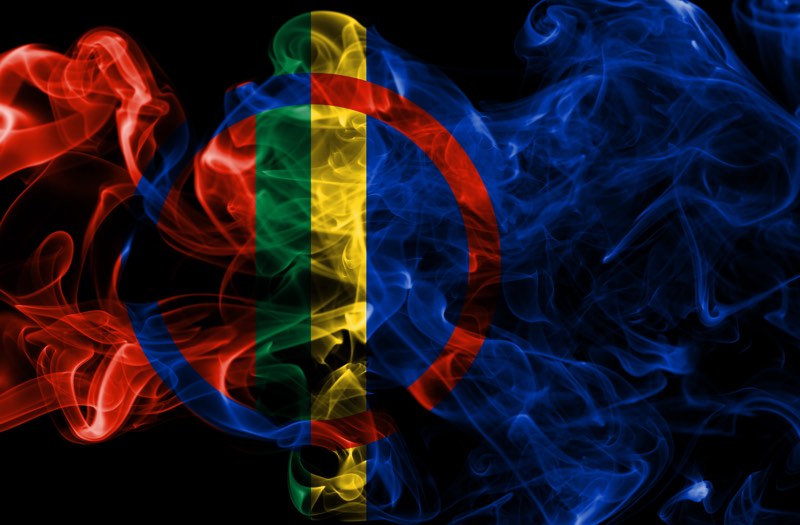
In this article, we’ll take a look at the changing relationship between the Sami and Norwegian authorities.
We’ll also look at how the people make a living, both historically and today. Finally, we’ll take a look at the unique language and culture.
Who are the Sami?
The descendants of an aboriginal, nomadic population, the Sami of today are one people spread across four nation states.
For as long as reliable sources have existed, we know that the Sami have lived in the land known as Fennoscandia, the peninsula made up of the Scandinavian peninsular, Finland, Karelia, and the Kola Peninsula.
Estimates put the total number of Sami today at around 70,000-80,000. Around half of the total population of Sami live in Norway, but there are also communities living in the north of Sweden and Finland, and even a couple of thousand in Russia.
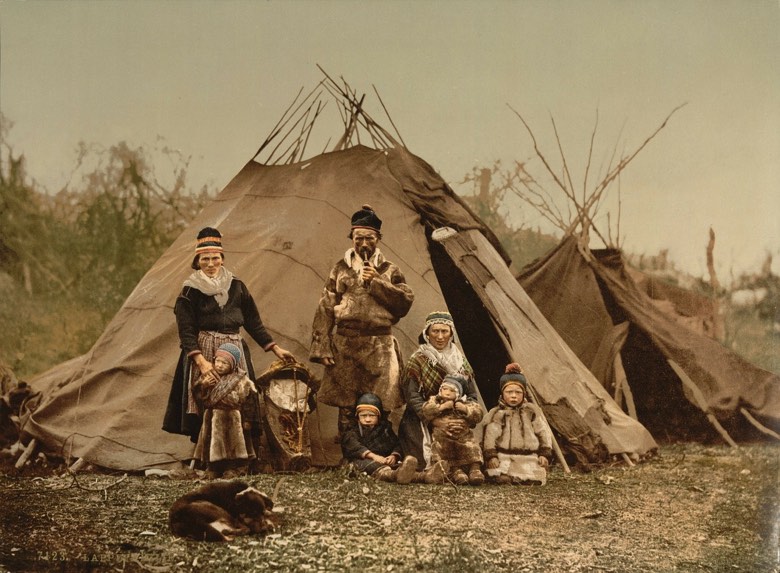
One of the reason the numbers are so low is that for many decades, the Norwegian government pursued policies of assimilation. Laws were passed banning schools from teaching in the Sami language.
A painful history, but a proud future?
The rights of the indigenous Sami people were threatened further in 1970 when plans to dam the Alta-Kautokeino river were presented. The plans for a new power station would provide energy and new jobs, but would require the flooding of the Sami community Maze.
Opposition was fierce, with famous Sami people holding hunger strikes outside the Norwegian Parliament in Oslo and a major protest at the construction site requiring 600 police to break up. Nevertheless, the power plant went ahead and was finished in 1987.
Despite the defeat, the Sami protests raised enough awareness among politicians and the general public that it was seen as the pivotal moment that led to the creation of the Sami Act in 1987.
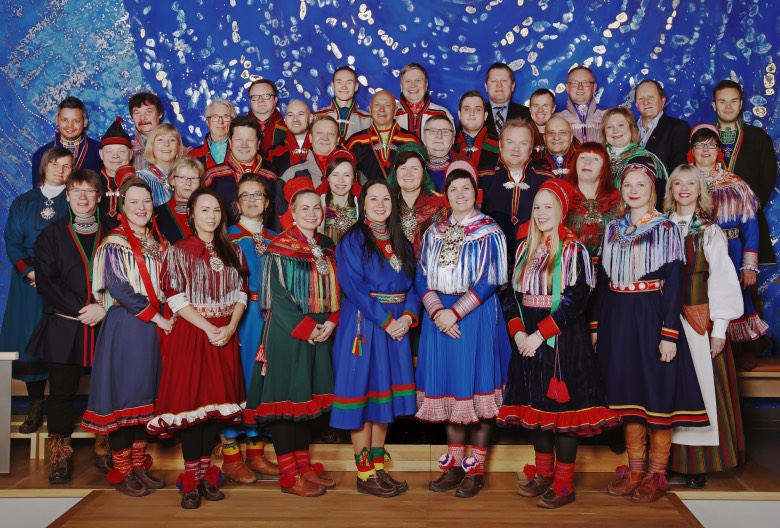
This in turn turn led to the creation of the Sami Parliament and the Finnmark Act that covers land use in much of northern Norway.
The reindeer economy
Around 2,600 Sami people in Norway make their living from herding reindeer, and much of the land in northern Norway is used for raising reindeer.
Traditionally, most Sami people have also supported themselves through fishing, farming and hunting, on the coast and on the larger inland rivers.
Today, a large proportion of the Sami people live outside these traditional areas and have moved into the towns of northern Norway or to the Oslo area to work in other professions.
Even among those who live in the traditional Sami settlements, many earn their living in the service industry, travel and hospitality, or the public sector.
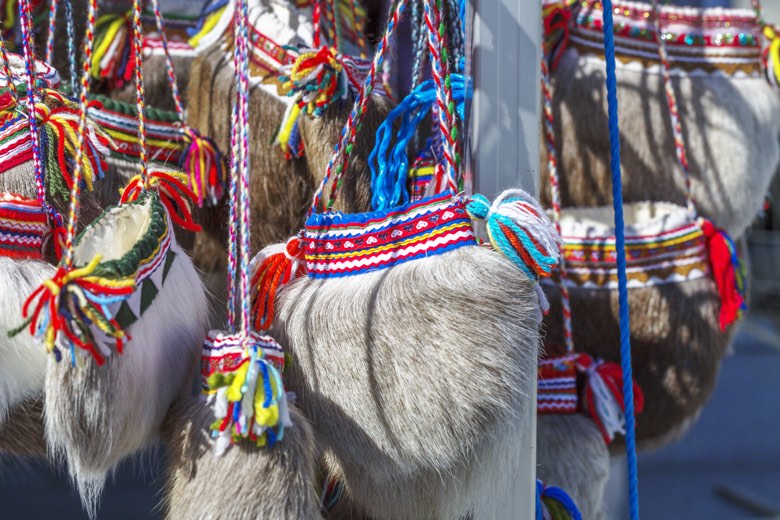
Reindeer herding in Norway
Reindeer herding in Norway is regulated by law, which says that the right to practice reindeer husbandry in Sami reindeer grazing areas is limited to people of Sami lineage with connections to a reindeer herding family. About 3,000 people are involved in the profession in Norway.
While reindeer herding is seen as a very traditional practice, the modern profession involves plenty of technology and mechanisation. That said, the knowledge passed down through generations on topics such as how pasture is impacted under changeable weather conditions still plays an important role.
In 2015, the Norwegian government established the International Centre for Reindeer Husbandry (ICR) in Kautokeino. It has an international board with members from Russia, Norway, Sweden and Finland, with a mission to:
- Contribute in maintaining and developing a sustainable reindeer husbandry in the north
- Strengthen the cooperation between the reindeer herding peoples
- Document and take care of the traditional knowledge of reindeer herders and contribute to knowledge development
- Communicate knowledge about circumpolar reindeer husbandry to target groups
The loss of pasture is a significant challenge to the community, and it's common to see Sami opposition to new infrastructure projects such as roads, power lines, pipelines, and military activities. In fact, it was such opposition that led to the most infamous moment in the history of Norway-Sami relations.
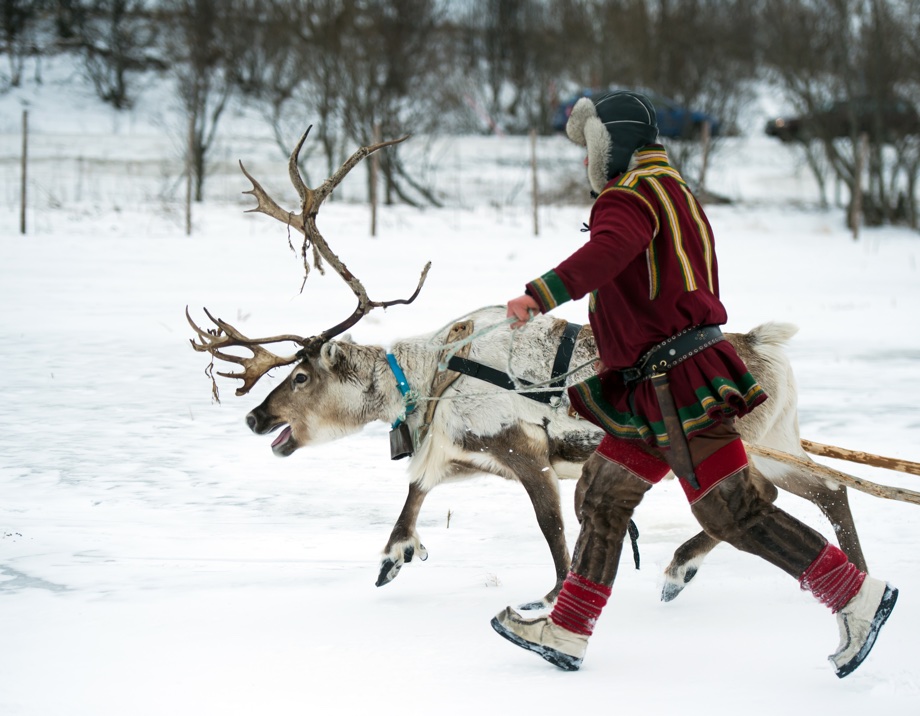
The Sami Parliament
Since 1989, the Norwegian Sami have been able to elect representatives to a Parliament solely focused on Sami issues.
An independent body elected by and representing the Sami people of Norway, the Sami Parliament works with a budget devolved from the national government.
It manages the Sami Development Fund, takes responsibility for the development of the Sami language(s) in Norway, promotes and protects Sami culture, and elects three of the six members to the board of the Finnmark Estate, the organisation that manages the 96% of land in Finnmark that is owned by the people.
The main Parliament building in Karasjok has quickly become an eye-catching landmark for the region. Guided tours are offered in Sami, Norwegian and English during the summer.
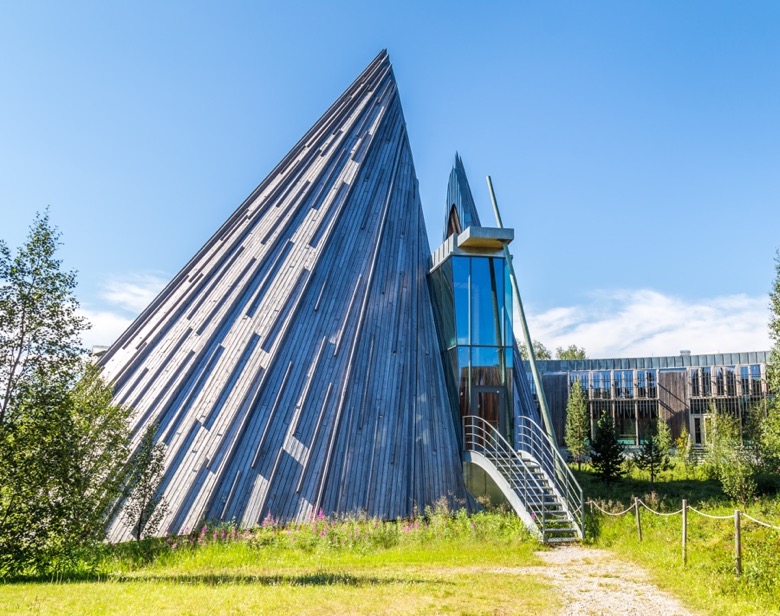
The Sami languages
One of the most important Sami cultural icons is the language, although languages would be the more appropriate word as there are several different varieties. It's estimated that around 25,000 people use Sami, with about half of those reading, writing and speaking it.
It's a surprise to many but Sami has nothing in common with Norwegian, or any of the Scandinavian languages for that matter. It's actually part of the Finno-Ugric branch of the Uralian languages, with Hungarian being its closest relative.
The language is rich in words describing the natural world, especially wildlife and the weather conditions that impact the traditional nomadic lifestyle. Some of these expressions are in danger of being lost as Sami culture modernises.
If you know any Norwegian at all, take a look at the following screenshot from Sami daily newspaper Avvir to see how different the language is:
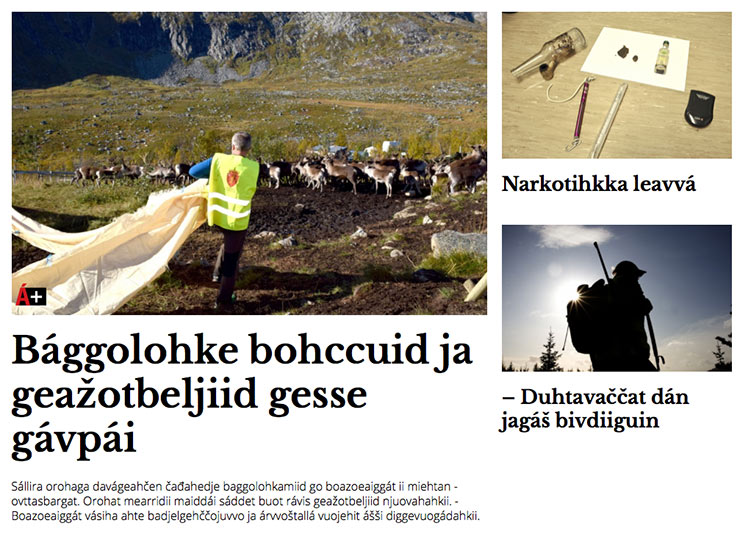
In a handful of municipalities in northern Norway, Sami is given equal status with Norwegian as the official language. Within these areas, everyone is entitled to be dealt with in Sami when using public services, and many road signs will be bilingual.
Norway's national broadcaster produces TV and radio and online content in Sami. If you're keen to hear the language, tune into the NRK Sápmi radio station available nationwide on DAB and online.
Sami culture in Norway
The Sami culture has many important forms of expression that really sets it apart from that of Norway and the rest of Scandinavia.
Duodji: These traditional, striking handicrafts make use of skin and hide from reindeer and other animals, and also furs, wool, wood and other natural items. The finished products can have a practical use (for example, bowls, spoons, clothing) or simply be ornamental.
Joik: One of Europe's oldest traditions of song remains alive in northern Norway. A joik is performed as a dedication to a person or a place, with the harmonies the most important aspect.
Contemporary Sami music: Mari Boine has helped transform the image of Sami culture in Norway. She is without doubt the most famous Sami singer, and her minimalist folk songs with a strong joik influence have won fans the world over. Have a listen:
Norway’s entry into the 2019 Eurovision Song Contest was influenced by Sami music. Some people complained of the use of a joik in an otherwise English language song. But while the song didn’t win, it turned out to be super popular among Eurovision fans.
Literature: Along with the recognition earned in the 1970s and 1980s came a wave of original literature in the Sami language. Given the limited readership, authors remain reliant on grants, which are administered by the Sami Parliament. Some Sami authors have seen success with books translated into Norwegian and other languages.
Media: Along with NRK Sápmi mentioned above, there are a few news outlets publishing in the Sami language including avvir.no and sagat.no, both of which receive subsidies.
Theatre: Sami theatre will be promoted to a much wider audience than ever before at Bodø 2024.
The Sami communities of Norway
Although there are Sami communities as far south as Trøndelag, the vast majority of settlements are located in northern Norway, specifically in the county of Finnmark. Given the traditional reliance on reindeer, Sami communities tend to be small and remote. The most notable today include:
Kárášjohka (Karasjok in Norwegian): As the home of the Sami Parliament, Karasjok can lay claim to being the Sami capital of Norway although the village itself has less than 2,000 residents. The white wooden Old Karasjok Church was the only building in the entire municipality to escape World World II undamaged.
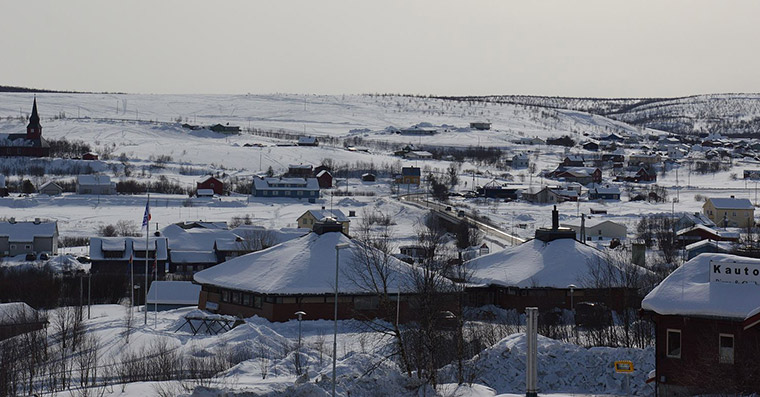
Guovdageaidnu (Kautokeino in Norwegian): Kautokeino is a village of around 1,500 people close to the Finnish border in Finnmark. Many Sami cultural and academic institutions are based here, and many people associate the region with the Sami because of the Alta-Kautokeino dam controversy of the 1970s and 1980s.
Together, around 5,000 people live in these two villages and the wider municipalities that share the names. More than 75% of the population are Sami.
Did you enjoy this article? If so, why not share it on Pinterest? We've got just the pin for you:
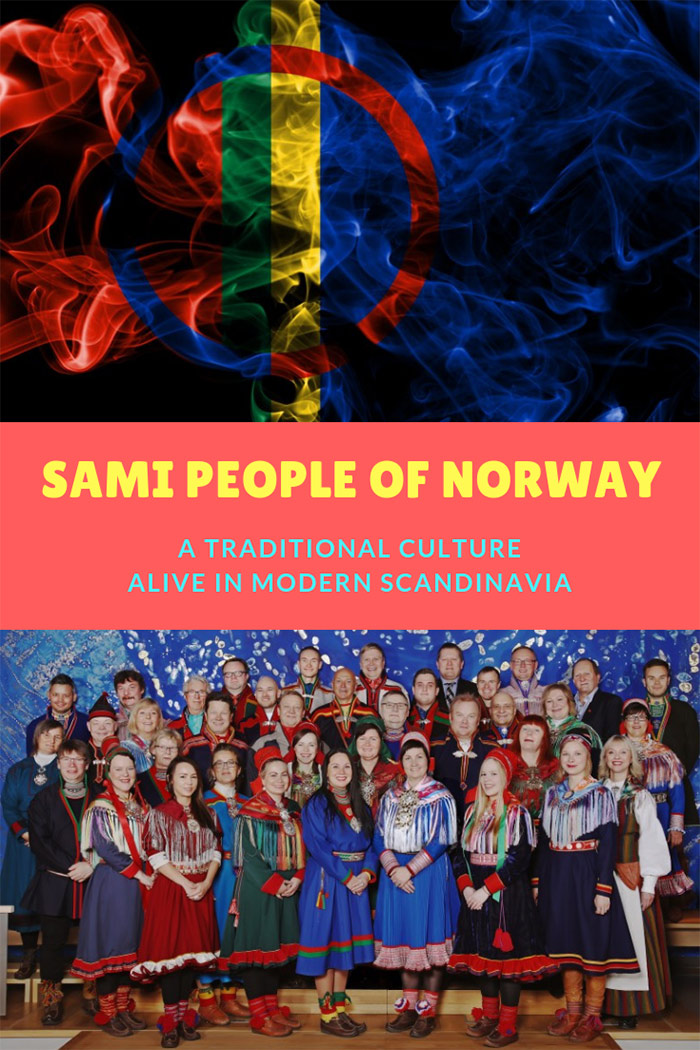


I like the description you made of this people. The last information I received about them it was when i went to the Nordiska Museet.
Thanks again.
I have read several tines in the past about the place of the Sami in Norwegian culture and government, and the long-standing overtly negative viewpoint imposed on them contradicts the supposed forward-thinking leftist themes of the controlling political factions. The next time some Norwegian boast about how progressive their human rights policies and actions are, ask that person to kindly look over their shoulder at the past 100 years of Sami relations.
Excellent point, Steven Johnson. I was shocked to read how Sami in Norway have been treated. Glad to read that they are trying to reverse the negative treatment of Sami people. All involved must remain vigilant not to revert to the old ways.
Considering all of the positive press Norway has received in recent years I am shocked, disappointed and saddened to discover this story but not surprised. We humans have a long way to go when it comes to true humanity. It amazes me to see all of the similarities between the Sami people of Norway and the original peoples of North America (no such thing as a “Native American”-the words are mutually exclusive) – even in the way they were treated. Their nomadic ways, the pitched tents, their colorful dress, dependency on a herded animals (deer vs buffalo) for survival. Kudos to the architect who designed their Parliament building. As an American architect I respect his design as an honest reflection of the people. It would be interesting to see the plan and photos of the interior.
There’s a digital tour with commentary here:
https://www.youtube.com/watch?v=j4mw_1aNNdg
What is the rate of suicide among the sami people and what is being done to help?
It would be very nice of you, if u didn’t ask that. It is a very serious topic, and you are being way too disrespectful! Awful question. My daughter was sitting next to me crying because she thought of her Sami friend Sabba. How have you no shame of publishing that.
hello can anyone explain to me. how the sami people have been suppressed in Norway? thanks in advance!
Hello! I am fascinated with the Sami people and their culture and learned I am of Scandinavian descent when I recently had my DNA tested! My husband and I purchased three authentic katas and intend to use them here in the US to host weddings and other events. I was very saddened to find myself accused of cultural appropriation when I first published pictures of the tents on my social media. Ignorant people here assumed they were the tipis of Native Americans. How do I combat all these stereotypes and educate people on the true history of this wonderful part of the world? It bothers me a lot because I want to represent them properly and be respectful. Is this just something that exists in the US?
I should have said “First Nation” and not used “Native Americans”.